UPSC GS 1
Jivitputrika Festival
- News: At least 43 people, including 37 children, drowned while participating in the ‘Jivitputrika’ festival in Bihar.
- Definition: Jivitputrika, also known as Jitiya Vrat, is a Hindu festival primarily celebrated in the northern and eastern regions of India, including Bihar, Uttar Pradesh, Jharkhand, and Nepal.
- Purpose: The festival is observed by mothers who fast for the well-being, long life, and prosperity of their children.
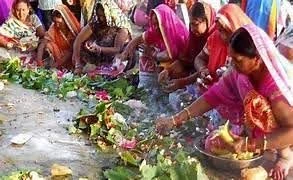
- Duration: The celebration spans three days, with specific rituals and customs for each day.
- Fasting Ritual:
-
- The main ritual involves a strict ‘nirjala’ fast, meaning no water is consumed during the fasting period.
- This fast symbolizes a mother’s devotion and love, with the belief that it brings divine blessings upon her children.
-
- Mythological Significance: The festival is rooted in Hindu mythology, commemorating the story of King Jimutavahana, who made significant sacrifices for the welfare of others.
- Celebration Phases:
-
- Nahai-Khai: The festival begins with Nahai-Khai, where mothers take a purifying bath and consume a nourishing meal.
- Fasting Day: The second day is marked by the rigorous fasting ritual, emphasizing devotion.
- Paaran: The festival concludes on the third day with Paaran, where the fast is broken with a celebratory meal.
-
Read also: White Revolution 2.0: New Dairy Frontier for India’s Growth | UPSC
Great Sandy Desert
- News: Around half of Australia’s total known night parrots live in a patch of the Great Sandy Desert in Western Australia.
- Location: The Great Sandy Desert is an arid wasteland located in northern Western Australia.
- Size: It is Australia’s second largest desert, covering an area of 284,993 sq.km, after the Great Victoria Desert.
- Geographical Extent:
-
- It extends from Eighty Mile Beach on the Indian Ocean eastward into the Northern Territory.
- It stretches from Kimberley Downs southward to the Tropic of Capricorn and the Gibson Desert.
-
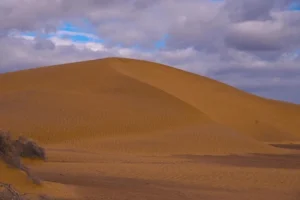
- Landscape Features:
-
- The desert is characterized by longitudinal sand ridges and chains of large salt lakes.
- It contains occasional low rocky hills interspersed with Triodia (Spinifex) grass.
-
- Surrounding Deserts:
-
- The Gibson Desert lies to the south.
- The Tanami Desert is located to the east.
-
- Climate
-
- Temperature: The region experiences exceptionally high daytime temperatures and significantly cooler overnight temperatures.
- Humidity: It has far below average humidity levels, contributing to its arid conditions.
-
- Population
-
- Demographics: The Great Sandy Desert is sparsely populated.
- Indigenous Communities: The main population consists of Indigenous Australians.
- The Martu tribe primarily resides in the west.
- The Pintupi tribe is located in the east.
-
Self-Respect Movement
- News: 2024 marks the start of the hundredth year of the Self-Respect Movement.
- Definition: E.V. Ramaswami Naicker (Periyar) founded the Self-Respect Movement, also known as the “Suyamariyati Iyakkam,” to concretize his ideas on social reform.
- Aim: It was committed to promoting Dravidian civilization and rejecting Brahminical domination.
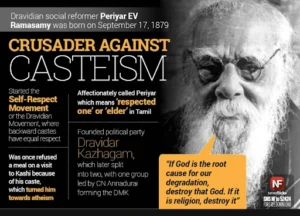
- Early Activities and Conferences:
-
- The first Provincial Self-Respect Conference was held at Chingleput on February 17, 1929.
- The conference emphasized egalitarianism, the boycott of Brahmin priests, and the involvement of women and young people.
- The Tamil language weekly Kudi Arasu (People’s Government) founded in May 1924 by Periyar became the organ of the Self-Respect Movement.
- Kudi Arasu was specially directed at certain non-Brahmin groups.
-
- Features of the Movement:
-
- It touched lower groups in the social hierarchy, such as the Vanniya Kula Kshatriyas and the untouchables.
- Special efforts were also directed at women and young people.
- Symbols of Brahminism, like the Manusmriti, were burned on multiple occasions.
- Characters from Hindu mythology, such as Ravana and Rama, were reinterpreted; Ravana was presented as a Dravidian hero, while Rama was portrayed as a wicked Aryan.
- Songs and pamphlets were distributed like Vasittira tevarkal kortu (wonderful court of Deities), published in 1919.
-
- Self-Respect Marriages:
-
- The movement encouraged inter-caste, inter-class, and inter-religious marriages, along with widow remarriages.
- Promoted marriages where women could choose their partners, divorce if necessary, and remarry.
- These marriages were conducted in Tamil instead of Sanskrit, and without the involvement of Brahmin priests.
- Birth control and contraception were actively promoted.
- Men were taught to share domestic responsibilities and child-rearing, promoting gender equality within the household.
-
- 3 Key Resolutions Passed in First Provincial Self-Respect Conference:
-
- Refusal of donations for temple construction or the employment of priests.
- Condemned Varnashrama Dharma (the caste system), rejecting the division of society based on birth.
- Opposed caste-based suffixes and terms that denoted caste hierarchy.
- Advocated equal inheritance rights for women and supported the idea of marriage being terminable at the will of either party.
-
- Impact on Women: The Self-Respect Movement saw the devadasi abolition movement as a twin assertion against caste and gender oppression.
UPSC GS 2
Central Drugs Standard Control Organisation (CDSCO)
- News: The Central Drugs Standard Control Organisation (CDSCO) has identified over 50 drugs which have failed in the drug test.
- Definition:
-
- CDSCO is the Central Drug Authority for discharging functions assigned to the Central Government under the Drugs and Cosmetics Act.
- It is a Statutory Agency.
-
- Ministry: Directorate General of Health Services, Ministry of Health & Family Welfare
- Functions:
-
- Regulatory control over the import of drugs,
- Approval of new drugs and clinical trials,
- Meetings of Drugs Consultative Committee (DCC) and Drugs Technical Advisory Board (DTAB),
- Grant of licenses of certain specialized categories of critical Drugs such as blood and blood products, I. V. Fluids, Vaccine and Sera.
-
- Head office: Delhi
- More on News:
-
- Samples of around 50 medicines, including some common ones such as paracetamol (used for fever), metformin (first line of treatment for diabetes), and pantoprazole (used for acidity), have been found to be spurious or not of standard quality (NSQ) by the Central Drugs Standard Control Organisation.
-
- Categories of Failed Drugs:
-
- Spurious Drugs: These are essentially fakes — products that pretend to be popular brands of medicines, which mislead people into buying them. These fakes may or may not contain the active ingredient, and are not manufactured by the company that makes the drug of that brand name.
- For example, samples of telmisartan (used for the treatment of hypertension) and pantoprazole were found to have been not manufactured by the companies whose branding they carried, Glenmark and Sun Pharma respectively.
- Poor Quality: Drugs that may contain a faulty description, or may not dissolve in the proper way, or may have a lesser quantity of active ingredient, etc. are considered to be not of standard quality, or NSQ. These medicines may not actively harm the person who consumes them, but the patient may suffer because the drug fails to do what it is meant to.
- Metformin failed the dissolution test, which means that the medicine, once consumed, would not dissolve properly and work in the way it is supposed to.
- Adulterated Drugs: These contain contaminants or adulterants that can cause direct harm to the person who consumes them. The entire batches of these drugs are usually recalled by the regulator; the company too, could initiate a recall on its own.
-
Removal of Judges
- News: A Bench of the five senior-most Supreme Court judges headed by Chief Justice of India (CJI) D Y Chandrachud “expressed serious concern” about comments made by a Karnataka High Court Justice V Srishananda recently.
- Removal of Judges in India:
-
- A judge may be removed from office on grounds of “proven misbehaviour or incapacity.”
- Although the Constitution does not explicitly use the term “impeachment,” it is commonly used to describe the process for removing judges under Article 124 (for Supreme Court judges) and Article 218 (for High Court judges).
- A judge can only be removed by an order of the President, based on a motion passed by both Houses of Parliament.
-
- Judges Inquiry Act, 1968: The procedure for removing judges is detailed in the Judges Inquiry Act, 1968.
- Initiating the Impeachment Motion: The motion can be introduced in either House of Parliament. To initiate proceedings:
-
- At least 100 members of Lok Sabha must sign a notice addressed to the Speaker.
- Alternatively, at least 50 members of Rajya Sabha must sign a notice addressed to the Chairman.
- The Speaker or Chairman may consult individuals and examine material related to the notice before deciding to admit or reject it.
-
Historical Impeachment Proceedings
|
- Investigation of the Complaint: If the motion is admitted, the Speaker or Chairman will form a three-member committee to investigate. The committee will consist of:
-
- A Supreme Court judge.
- A Chief Justice of a High Court.
- A distinguished jurist.
- The committee will frame charges based on the investigation and provide a copy of these charges to the judge, allowing them to present a written defence.
-
Transfer Policy
|
- Report Submission: Upon completing its investigation, the committee submits its report to the Speaker or Chairman.
-
- The report is laid before the respective House of Parliament.
- If the report finds evidence of misbehaviour or incapacity, the motion for removal will be debated and considered.
-
- Voting in Parliament: The motion for removal must be adopted by both Houses of Parliament with:
-
- A majority of the total membership of each House.
- A majority of at least two-thirds of the members present and voting in each House.
- If both Houses pass the motion by the required majority, it is sent to the President.
-
- Order of Removal: Upon receiving the motion adopted by both Houses, the President will issue an order for the removal of the judge.
L69 Grouping and G4 Grouping
- News: As the United Nations approaches its 80th anniversary in 2025, the G4 countries and L69 and C-10 countries have called for urgent reform of the UN Security Council to seek permanent membership.
- About L69 Grouping:
- Overview: The L69 Group is a coalition of 42 developing countries from Africa, Latin America and the Caribbean, Asia, and the Pacific.
- Formation: Established in 2007, the group is named after a draft resolution (L.69) submitted to the UN General Assembly.
- Focus: The member nations share a common goal of advocating for reform in the UN Security Council (UNSC) to enhance representation for developing countries.
- Advocacy Goals: The L69 advocates for:
-
- A more representative and inclusive Security Council.
- Strengthening the role of developing countries, particularly from Africa.
- Addressing the Common African Position (CAP) based on the Ezulwini Consensus and Sirte Declaration, which calls for no less than two permanent seats for Africa with full veto power and increased non-permanent seats.
-
- G4 Grouping:
- Overview:
-
- The G4 is a coalition of four nations: India, Brazil, Germany, and Japan, which is seeking permanent membership in the United Nations Security Council (UNSC)
- The group was formed in 2005.
-
- Significance: The G4 countries are economically influential and contribute significantly to international peace and security, which they believe justifies their inclusion as permanent members of the UNSC.
- Objectives: Key objectives of the G4 include:
-
- Expansion of both permanent and non-permanent categories of UNSC membership to allow for more equitable representation.
- Securing permanent membership for themselves while supporting reforms to enhance representation for Africa, Asia-Pacific, and Latin America in the Council.
- Addressing the stagnation in the Intergovernmental Negotiations (IGN) process on Security Council reform and advocating for the initiation of text-based negotiations to expedite the reform process.
-
GlobE Network
- News: India has been elected to the steering committee of anti-corruption body GloBE Network.
- Initiative: The Global Operational Network of Anti-Corruption Law Enforcement Authorities (GloBE Network) was established as part of a G-20 initiative.
- Launch Date: The GloBE Network was officially launched on June 3, 2021, during a special event at the UN General Assembly Special Session against Corruption.
- Membership:
-
- The network comprises 121 member countries, including India.
- It has 219 member authorities participating in its activities.
-
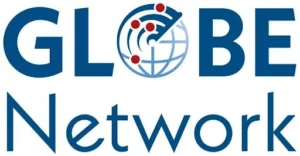
- Purpose: The GloBE Network serves as a unique platform for agencies worldwide to:
-
- Share best practices and criminal intelligence.
- Develop strategies for combating corruption.
- Collaborate in the common cause of tackling corruption.
-
- Leadership Structure:
-
- The steering committee is composed of one chair, one vice-chair, and 13 members.
- This committee provides leadership and direction for the organization.
-
- India’s Participation:
-
- India’s Central Bureau of Investigation (CBI) and Enforcement Directorate (ED) are part of the GloBE Network.
- The Ministry of Home Affairs (MHA) serves as the central authority for India within the network.
-
- Governance and Support:
-
- The Network is governed by its members.
- It is supported by the United Nations Office against Drugs and Crime (UNODC), which provides the Network’s secretariat.
-
- Recent Developments: During India’s G-20 Presidency in 2023, two high-level principles for combating corruption were adopted, focusing on leveraging the GloBE Network.
UPSC GS 3
PARAM Rudra Supercomputers
- News: Prime Minister Narendra Modi recently unveiled three indigenously developed Param Rudra supercomputers.
- Definition: Param Rudra is a high-performance computing system made to process intricate calculations and simulations incredibly quickly.
- Developed by: These supercomputers are developed indigenously by the Centre for Development of Advanced Computing (C-DAC) under the National Supercomputing Mission (NSM).
- Deployment Locations:
-
- These supercomputers have been deployed in Pune, Delhi and Kolkata to facilitate pioneering scientific research.
- Giant Metre Radio Telescope (GMRT) in Pune will leverage the supercomputer to explore Fast Radio Bursts (FRBs) and other astronomical phenomena.
- Inter-University Accelerator Centre (IUAC) in Delhi will enhance research in fields like material science and atomic physics.
- S.N. Bose Centre in Kolkata will drive advanced research in areas such as physics, cosmology, and earth sciences.
-
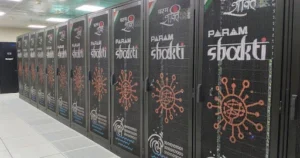
- High-Performance Computing (HPC) System:
-
- Purpose: The HPC system is tailored for weather and climate research.
- Locations: It is situated at two key sites:
- Indian Institute of Tropical Meteorology (IITM) in Pune
- National Center for Medium Range Weather Forecast (NCMRWF) in Noida
- Naming: The new HPC systems are named ‘Arka’ and ‘Arunika,’ reflecting their connection to the Sun.
- Significance: These high-resolution models will enhance the accuracy and lead time of predictions related to tropical cyclones, heavy precipitation, thunderstorms, hailstorms, heat waves, droughts, and other critical weather phenomena.
-
Read also: India-Sri Lanka Relations: A Deep-Rooted Bond | UPSC
Monocled Cobra
- News: A recent study highlights the urgent need for species-specific and region-specific antivenoms to enhance the treatment of bites from the Monocled Cobra (Naja kaouthia).
- Definition:
-
- The Monocled Cobra (Naja kaouthia) is an Elapidae snake.
- Due to being an extremely poisonous and formidable predator it is also called Indian Spitting Cobra.
-
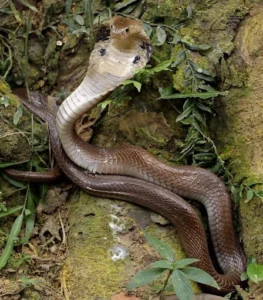
- Distribution:
-
- It is native to Southeast Asia, their distribution ranges across India, particularly in West Bengal, Bangladesh, Bhutan, Cambodia, China, Laos, Malaysia, Myanmar, Nepal, Thailand, and Vietnam.
-
- Habitat
-
- Habitats that these snakes prefer are areas with water, for example, paddy fields, swamps, and mangroves, where they show semi-aquatic behavior and hide in rodent burrows.
- They also live in forests, grasslands, and shrublands, sometimes sheltering in tree hollows.
- Attracted by rodents, monocled cobras also sometimes enter suburban and urban areas, which include human settlements like cities. They generally live at a 3,300 ft altitude.
-
- IUCN Red List: Least Concern (LC)

